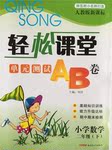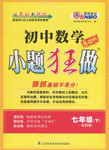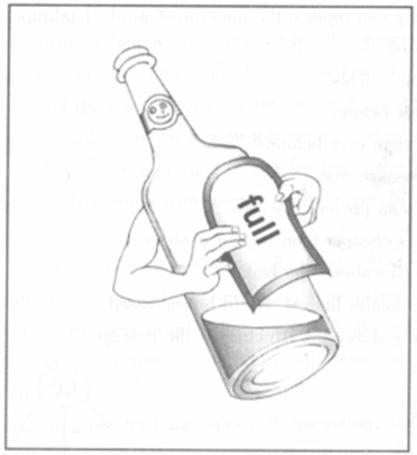
It is difficult for doctors to help a person with a damaged brain. Without enough blood, the brain lives for only three to five minutes. More often the doctors can’t fix the damage. Sometimes they are afraid to try something to help because it is dangerous to work on the brain. The doctors might make the person worse if he operates on the brain.
Dr. Robert White, a famous professor and doctor, thinks he knows a way to help. He thinks doctors should make the brain very cold. If it is very cold, the brain can live without blood for 30 minutes. This gives the doctor a longer time to do something for the brain.
Dr. White tried his idea on 13 monkeys. First he taught them to do different jobs, then he operated on them. He made the monkeys’ blood back to the monkeys’ brains. When the brain’s temperature was 10℃, Dr. White stopped the blood to the brain. After 30 minutes he turned the blood back on. He warmed the blood again. After their operations the monkeys were like they had been before. They were healthy and busy. Each one could still do the jobs the doctor had taught them.
The biggest difficulty in operating on the damaged brain is that .
A. the time is too short for doctors B. the patients are often too nervous
C. the damage is extremely hard to fix D. the blood-cooling machine might break down
The brain operation was made possible mainly by .
A. taking the blood out of the brain B. trying the operation on monkeys first
C. having the blood go through a machine D. lowering the brain’s temperature
With Dr. White’s new idea, the operation on the damaged brain .
A. can last as long as 30 minutes B. can keep the brain’s blood warm
C. can keep the patient’s brain healthy D. can help monkeys do different jobs
What is the right order of the steps in the operations?
a. send the cooled back to the brain b. stop the blood to the brain
c. have the blood cooled down d. operate on the brain
A. a, b, c, d B. c, a, b, d C. c, b, d, a D. b, c, d, a
Which of the following is not true?
A. If there isn’t enough blood, the brain can live for only three to five minutes.
B. If the brain is very cold, it can live without blood for half an hour.
C. Dr. White tried his idea for thirteen times.
D. After their operations, the monkeys were healthy and busy again.
 轻松课堂单元测试AB卷系列答案
轻松课堂单元测试AB卷系列答案 小题狂做系列答案
小题狂做系列答案科目:高中英语 来源: 题型:
单词拼写
Kindness is one of his c_________.
How many countries does the UK c________ of?
Being e_______ to the sun is harmful to your skin.
He was a_______ of stealing.
She said that she a______ her knowledge of English by her careful study.
He has an __________(乐观的) attitude toward his future.
Exhausted, I ______(溜进)into bed and fell fast asleep.
His friends were _________ (热心的) about his theory.
Jane was writing a letter and __________(同时) Pat was watching TV.
A giant machine, always ________ (贪婪的) for more, swallows all the waste.
查看答案和解析>>
科目:高中英语 来源: 题型:阅读理解
The easy way out isn’t always easiest. I learned that lesson when I decided to treat Doug, my husband of one month, to a special meal. I glanced through my cookbook and chose a menu which included homemade bread. Knowing the bread would take time, I started on it as soon as Doug left for work. As I was not experienced in cooking, I thought if a dozen was good, two dozen would be better, so I doubled everything. As Doug loved oranges, I also opened a can of orange and poured it all into the bowl. Soon there was a sticky dough (面团) covered with ugly yellowish marks. Realizing I had been defeated, I put the dough in the rubbish bin outside so I wouldn't have to face Doug laughing at my work, I went on preparing the rest of the meal, and, when Doug got home, we sat down to Cornish chicken with rice. He tried to enjoy the meal but seemed disturbed. Twice he got up and went outside, saying he thought he heard a noise. The third time he left, I went to the windows to see what he was doing. Looking out, I saw Doug standing about three feet from the rubbish bin, holding the lid up with a stick and looking into the container. When I came out of the house, he dropped the stick and explained that there was something alive in our rubbish bin. Picking up the stick again, he held the lid up enough for me to see. I felt cold. But I stepped closer and looked harder. Without doubt it was my work. The hot sun had caused the dough to double in size and the fermenting yeast (酵母) made the surface shake and sigh as though it were breathing. I had to admit what the ‘living thing’ was and why it was there. I don’t know who was more embarrassed by the whole thing, Doug or me.
The writer’s purpose in writing this story is ________.
A. to tell an interesting experience
B. to show the easiest way out of a difficulty
C. to describe the trouble facing a newly married woman
D. to explain the difficulty of learning to cook from books
Why did the woman’s attempt at making the bread turn out to be unsuccessful?
A. The canned orange had gone bad.
B. She didn’t use the right kind of flour.
C. The cookbook was hard to understand.
D. She did not follow the directions closely.
Why did the woman put the dough in the rubbish bin?
A. She didn’t see the use of keeping it
B. She meant to joke with her husband.
C. She didn’t want her husband to see it.
D. She hoped it would soon dry in the sun.
What made the dough in the rubbish bin look frightening?
A. The rising and falling movement.
B. The strange-looking marks.
C. Its shape.
D. Its size.
When Doug went out the third time, the woman looked out of the window because she was ________.
A. surprised at his being interested in the bin
B. afraid that he would discover her secret
C. unhappy that he didn't enjoy the meal
D. curious to know what disturbed him
查看答案和解析>>
科目:高中英语 来源: 题型:
苏格兰(Scotland)歌手“苏珊大妈”凭借选秀节目《英国达人》在2009年脱颖而出。她的故事仿佛一部现代童话,带给无数人启迪和激励。
请你根据下面的素材写一篇110词左右的英语短文,介绍苏珊大妈的经历,并谈谈她的成名经历给你的启发。
1. 苏珊·波伊儿(Susan Boyle)从小梦想成为职业歌手;
2. 苏珊多次参加选秀节目被拒,但她从不放弃梦想;
3.2009年4月,47岁的苏珊参加了《英国达人》(Britain’s Got Talent),一曲《我曾有梦》(I dreamed A dream)使她成名,并最终圆了她的歌手梦。
参考词汇:职业的professional; 激励inspire.
选秀节目talent shows
查看答案和解析>>
科目:高中英语 来源: 题型:阅读理解
When you think about math, you probably don’t think about breaking the law, solving mysteries or finding criminals. But a mathematician in Maryland does, and he has come up with mathematical tools to help police find criminals.
People who solve crimes look for patterns that might reveal(揭示) the identity of the criminal. It’s long been believed, for example, that criminals will break the law closer to where they live, simply because it’s easier to get around in their own neighborhood. If police see a pattern of robberies in a certain area, they may look for a suspect(嫌疑犯) who lives near the crime scenes. So, the farther away from the area a crime takes place, the less likely it is that the same criminal did it.
But Mike O’Leary, a mathematician at Towson University in Maryland, says that this kind of approach may be too simple. He says that police may get better clues to the location of a criminal’s home base by combining these patterns with a city’s layout(布局) and historical crime records.
The records of past crimes contain geographical information and can reveal easy targets — that is, the kind of stores that might be less difficult to rob. Because these stores are along roads, the locations of past crimes contain information about where major streets and intersections are. O’Leary is writing a new computer program that will quickly provide this kind of information for a given city. His program also includes information about the people who live in the city, and information about how a criminal’s patterns change with age. It’s been shown, for example, that the younger the criminal, the closer to home the crime.
Other computer programmers have worked on similar software, but O’Leary’s uses more math. The mathematician plans to make his computer program available, free of charge, to police departments around the country.
The program is just one way to use math to fight crime. O’Leary says that criminology — the study of crime and criminals — contains a lot of good math problems. “I feel like I’m in a gold mine and I’m the only one who knows what gold looks like,” he says. “It’s a lot of fun.”
To find criminals, police usually ______.
A. focus on where crimes take place B. seek help from local people
C. depend on new mathematical tools D. check who are on the crime scene
O’Leary is writing a computer program that ______.
A. uses math to increase the speed of calculation
B. tells the identity of a criminal in a certain area
C. shows changes in criminals’ patterns
D. provides the crime records of a given city
By “I’m the only one who knows what gold looks like”, O’Leary means that he ______.
A. is better at finding gold than others
B. is the only one who uses math to make money
C. knows more criminals than other mathematicians
D. knows best how to use math to help solve crimes
What is the main idea of the text?
A. Criminals live near where crimes occur.
B. Math could help police find criminals.
C. Crime records could be used to fight crime.
D. Computer software works in preventing crimes.
查看答案和解析>>
科目:高中英语 来源: 题型:
Directions: Write an English composition in 120-150 words on the topic
请根据下面提示,写一篇短文。 In your spoken English class,your teacher shows you the following picture.You are asked to describe the picture and explain how you understand it.
参考词汇:label标签 Empty bottles make the loudest noise.

查看答案和解析>>
科目:高中英语 来源: 题型:
—Have you got your exam papers?
—Not yet. I guess they _____ at this moment.
A. are being graded B. are grading C. have graded D. have been graded
查看答案和解析>>
科目:高中英语 来源: 题型:
Is the painting you’d like _______ to your friend _____ that belongs to your brother !
A. to have sent ; the one B. to have it sent ; that
C. to have it sent ; the one D. to get it to be sent ; that
查看答案和解析>>
科目:高中英语 来源: 题型:
——I’m going to Shanghai to attend an important meeting tomorrow. Do you have anything __________ to your brother?
——Thanks a lot. I’m considering how to do it.
A. to take B. to be taken C. taken D. being taken
查看答案和解析>>
湖北省互联网违法和不良信息举报平台 | 网上有害信息举报专区 | 电信诈骗举报专区 | 涉历史虚无主义有害信息举报专区 | 涉企侵权举报专区
违法和不良信息举报电话:027-86699610 举报邮箱:58377363@163.com